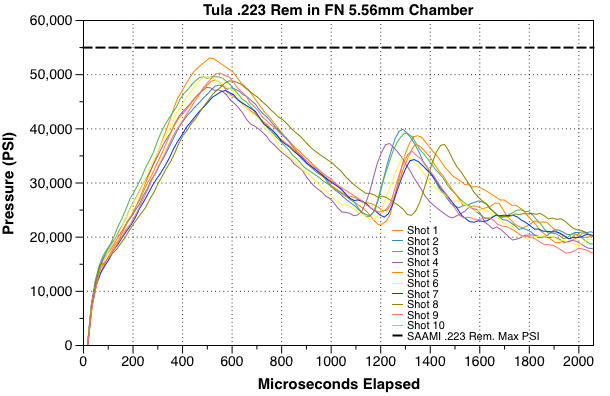Some two more data points for 75 gr Gold Dot as measured by a MagnetoSpeed V3:
- Centurion Arms 14.5" with a SureFire SOCOM556-RC: 2611 FPS
- Centurion Arms 11.5" with a SureFire SOCOM556-RC2: 2471 FPS
Not sure why my numbers on the 14.5" are so different compared to the 16" and 20" data mentioned above.




 Reply With Quote
Reply With Quote





Bookmarks